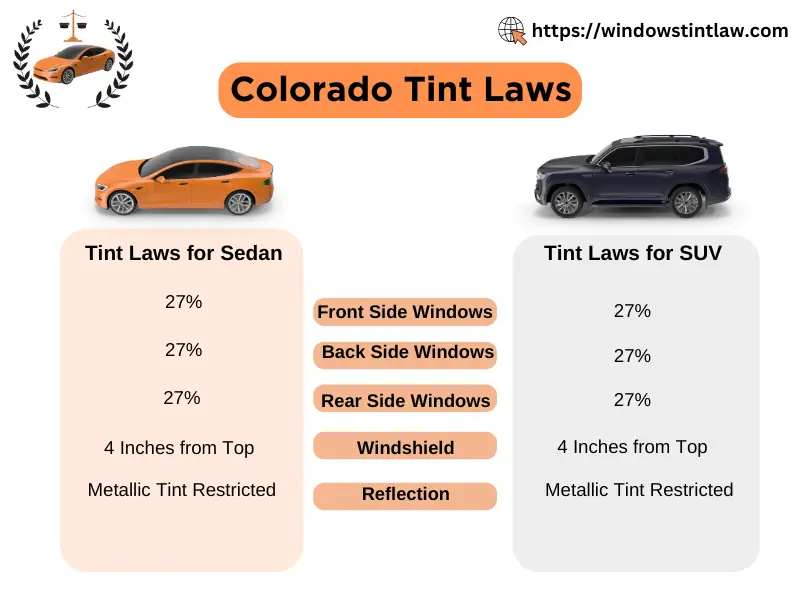Window tinting laws in Colorado were implemented in 1995.
The updated window tint law in Colorado requires the motor vehicles registered in the state transmit at least 70% of light through the Windshield and 27% of Light transmission through other windows.
Drivers must follow the state laws for tinted windows to avoid any legal actions from the concerned authorities.
Overview of Colorado Tint Laws
The Overview of Colorado Tint laws for Cars and SUVs is listed in the below image. Please follow these limitations for Windows Tint Darkness, Tint Reflection and Color Tints.

Darkest Legal Tint in Colorado
Motorist in Colorado should follow the below Window Tint limits. Residents should obey the State laws by following the mentioned Window Tint Darkness and Tint reflection guidelines.
| State | Front Side Windows | Back Side Windows | Rear Window | Windshield | Tint Reflection | Other Restrictions |
| Colorado | 27% | 27% | 27% | 4 inches from Top | Metallic Tint Restricted | Red and Amber Tint colors are not allowed |
Window Tint Reflection
Metallic Tint is restricted in Colorado as it reflects the light which causes trouble to other motorists while driving. The tinting material should not reflect light to a greater extent than a standard car window without any tint material.
Other Rules & Regulations for Tinted Windows
There are some other regulations for vehicles with tinted windows, which are listed below:
- Side Mirrors: Dual Side mirrors are required by state laws, if rear window is tinted.
- Restricted Colors: Red and Amber Tint colors are not allowed in Colorado.
- Certificate: Window film manufacturers are not required to get certification of film they sell in Colorado state.
- Stickers: Colorado State law recommends but doesn’t require stickers to identify the legal tint installed on the vehicles.
- Medical Exemption: Colorado state laws don’t allow medical exemption to install lower tints or illegal window tints.
Frequently Asked Questions
Disclaimer: Please note that these laws are up to date as per our knowledge, for more details about Colorado tint law updates consult with DMV or concerned authorities.
